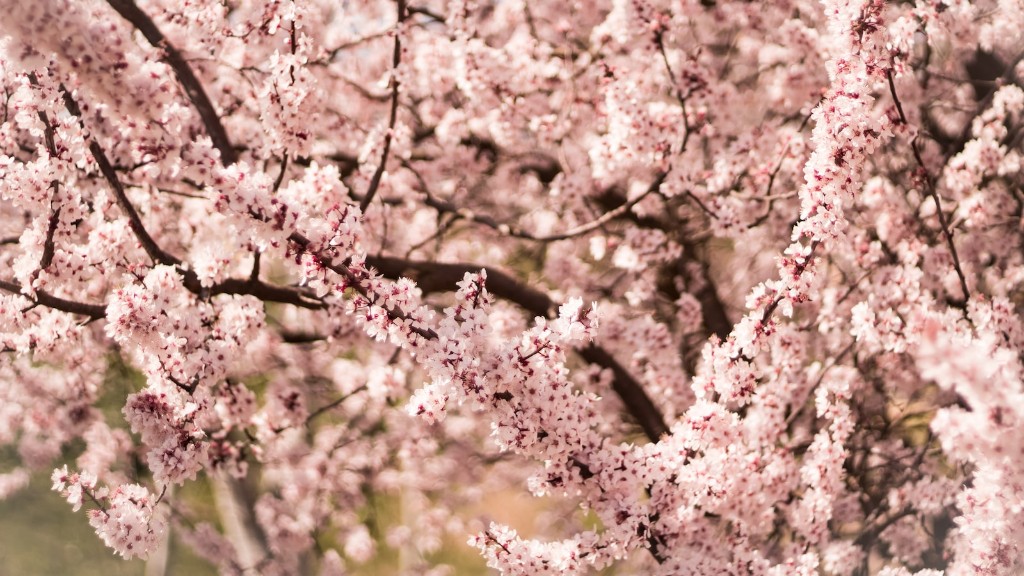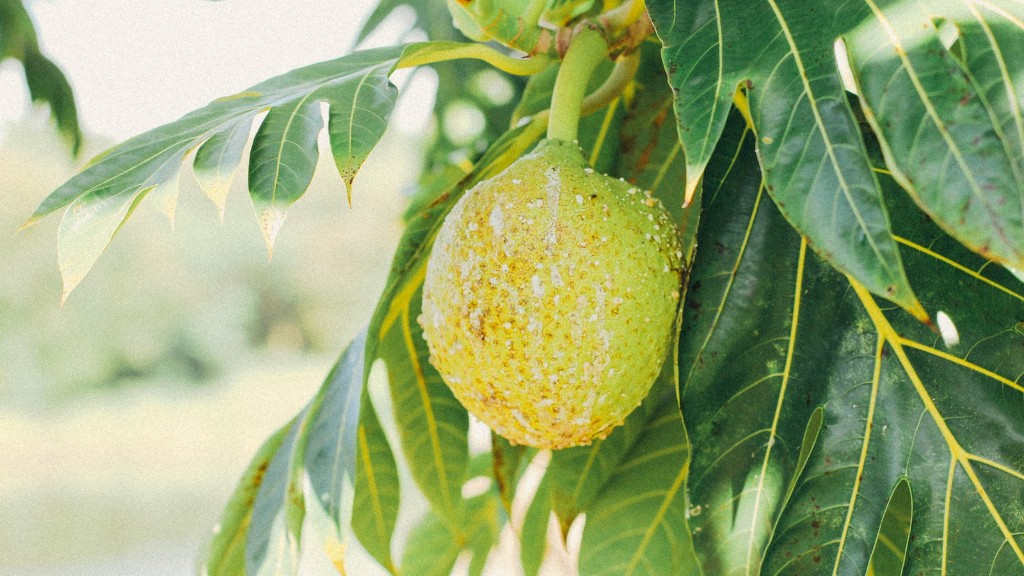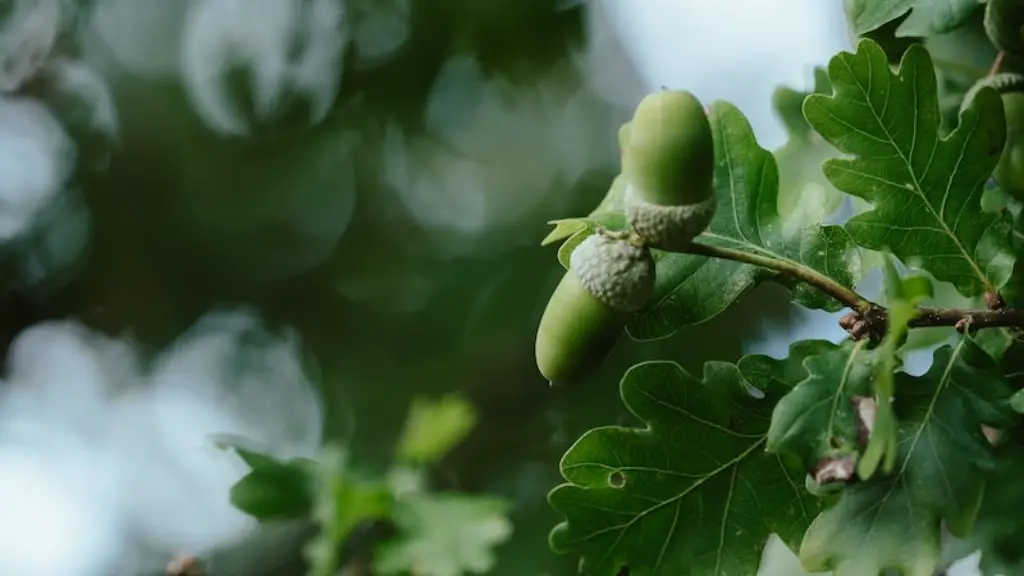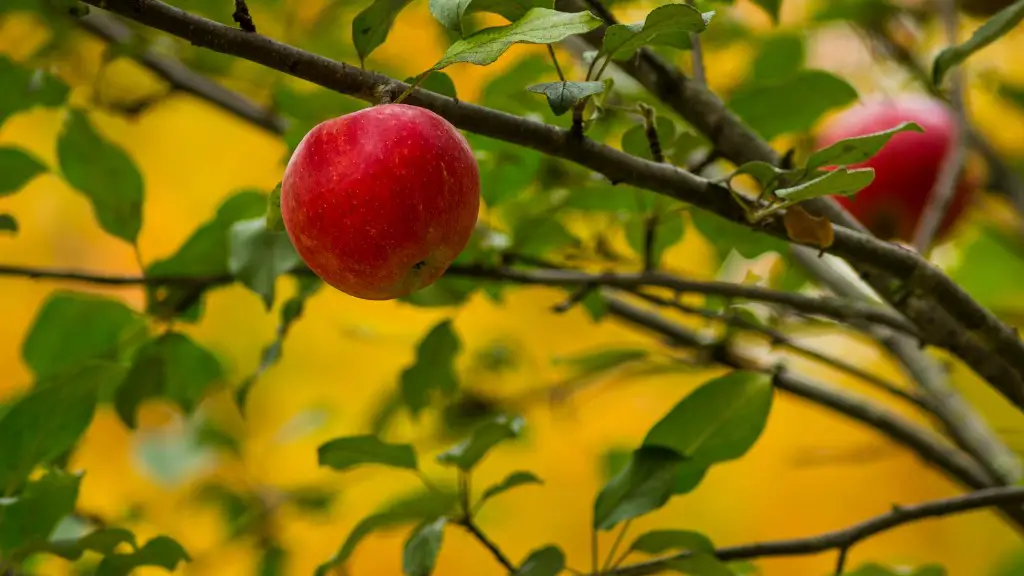Growing black cherry trees from seed is a rewarding adventure for any gardener or plant enthusiast. These trees produce a delicious fruit, adding value to any yard or garden design. Growing your own tree from seed allows you to have complete control of the process from start to finish. Whether you live in a rural area or city environment, you can enjoy the smoky, sweet flavor of homegrown black cherries by successfully growing them from seed.
The first step when growing your own black cherry tree is to make sure you have the right conditions for success. Black cherry tree seeds need plenty of sunlight and a moderately dry environment. In regard to soil types, these trees prefer slightly acidic soil with a pH level of 6.5 to 7.0. If possible, dig a planting hole with a depth of two feet to provide the deepest possible root structure.
Before planting the seeds, you need to make sure they are viable. You can buy seeds from a nursery or from an online retailer. Once you have gathered the seeds, make sure to lay them out and allow them to air dry for a few weeks. This will make sure that the seeds are dry enough for planting.
The next step is to stratify the seeds. Seed stratification allows the seeds to produce a cold and moist environment that mimics natural winter conditions. You can do this by placing the seeds in a wet paper towel and putting in a sealed plastic bag with a small bit of soil. Place this into the refrigerator for two weeks, and then remove it and allow the seeds to come up to room temperature naturally.
When the seeds have been stratified, you are ready to plant them. Make sure to plant the seeds 1-2 inches deep and water them regularly. Planting should take place in the early spring, when there is minimal chance for frost. Using mulch will help keep the soil moist, and will also help to retain heat.
Once the seeds have germinated and have created a seedling, you will need to transplant it into a larger pot. This should take place in the late spring or early summer. If all goes well, your tree will begin bearing fruit within three to five years.
When it comes to maintenance, your black cherry tree will require regular pruning to help keep it healthy and help the production of flowers and fruit. Pruning should be done once a year, in late winter or early spring. This will help to keep the tree strong and healthy and will also promote more fruiting.
Fertilizing Requirements
Fertilizer is also an important part of successful black cherry cultivating. An annual application of a balanced fertilizer is typically sufficient and should be done in early spring. Make sure to use fertilizer sparingly and to water thoroughly after applying.
In addition, be sure to watch for any signs of disease or insect infestation. These issues can be easily treated with the use of proper pesticides or fungicides.
If you take the time and care to follow these guidelines for successful black cherry tree cultivation, you will soon be able to enjoy the amazing flavour of fresh cherries, grown in your very own backyard.
Harvesting & Storage
Harvesting your own black cherries can be a great addition to any garden or farm. When picking, look for cherries that are ripe and ready to pick. Pick only the best cherries and avoid any with spots or other blemishes, as these will likely be damaged or overripe.
Black cherries should be stored and handled carefully to ensure optimal freshness. Do not wash the fruit and store it in a dry, well-ventilated place, away from direct sunlight. Black cherries can also be frozen to preserve them for longer periods, which is ideal if you plan on using your own cherries in recipes.
Troubleshooting & Removal
If you decide to remove your black cherry tree from a certain area, proper tree removal techniques must be followed. The best way to do this is to contact a certified arborist. They will be able to safely and properly remove the tree and its roots, using the most innovative techniques to ensure minimal damage to the surrounding area.
In addition, you should be aware that if not properly taken care of, black cherry trees can become prone to certain diseases or pests. Common issues include leaf spot disease and blackfly infestation. To prevent these issues from occurring, be sure to keep your trees well trimmed and maintain a regular fertilization schedule.
Propagation
You can also propagate black cherry trees through cuttings, which is an ideal option if you already have a mature, healthy tree. The best time to take a cutting is during the late summer. To do this, select a stem that is at least a year old, and has no damage or disease. Be sure to make the cut just below a node, and use sharp and clean gardening scissors.
Once you have taken the cutting, place it into a clean pot filled with sandy, well-draining soil. Water thoroughly, and place the pot in a well-lit place. Leave undisturbed until the cutting has developed a root system, and then you can transplant it into larger containers or directly into the ground.
Preserving Black Cherries
If you plan on preserving the cherry harvest you’ve collected, it’s important to make sure the fruit is ripe. Overripe or under-ripe cherries will not pack the same flavor and can create an unpleasant texture. Once you have gathered ripe fruit, you can either freeze them or can them for long-term storage.
To freeze black cherries, place them in a single layer onto baking sheets and freeze them overnight. Once frozen, place the cherries in a freezer-safe container and store in the freezer for up to one year. To can black cherries, prepare them in a light or dark syrup, or a mixture of both. Use a pressure canner to ensure maximum shelf life.
Cherry Recipes
No matter how you choose to store your harvest, there are plenty of ways to make the most of your homegrown fruit. From pies, jams and jellies to smoothies and sauces, the possibilities are endless. Cherries also make a great addition to salads, ice creams and cocktails—perfect for any occasion.
Many of us love the flavor of black cherries, but aren’t aware of the many ways we can use them. Black cherries are an incredibly versatile ingredient that can be used in all sorts of recipes. From appetizers to entrees to desserts, you can use your homegrown black cherries in all sorts of tasty dishes.
Growing your own black cherry tree from seed is a rewarding way to get in touch with nature. Armed with the right tips and techniques, you can learn the art of successful cherry tree growing and enjoy the delicious flavor of your own homegrown black cherries.



